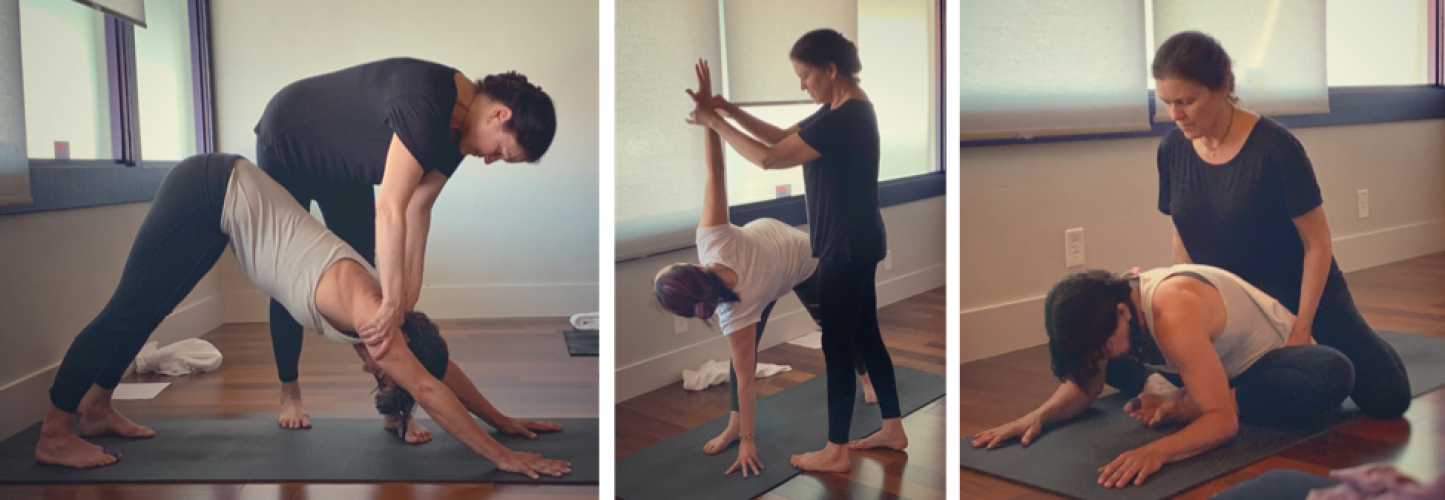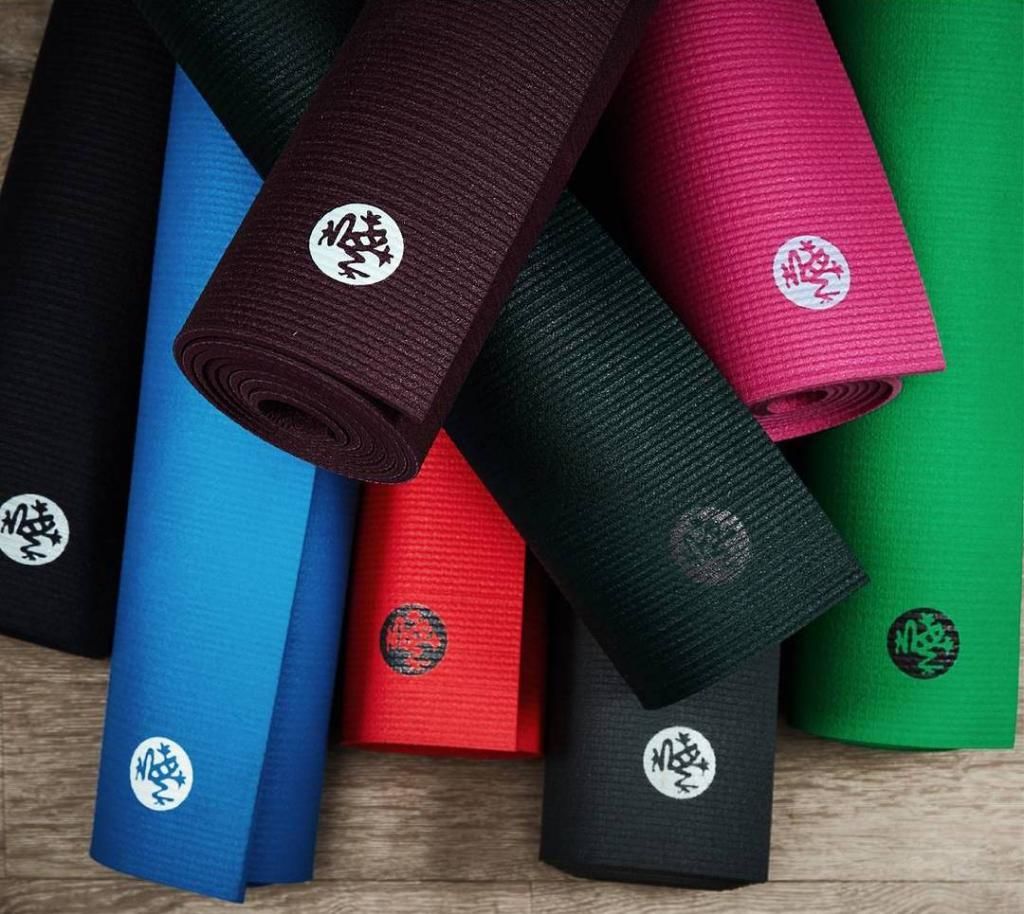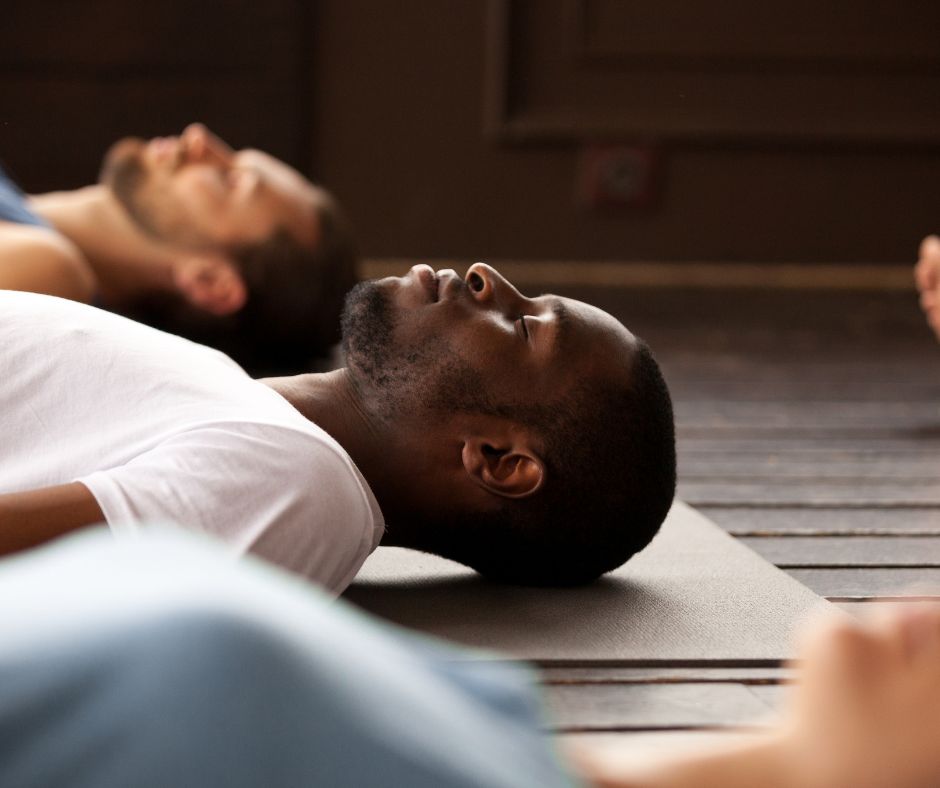As a community of yoga practitioners, we share such an intimate space and practice, and yet there’s so much we don’t know about each other. Because of this, I am dedicating some of my time to learn more about individuals within our community to help strengthen our bonds.
First up, Leigha Nicole, authorized Ashtanga yoga teacher who led the BTY Mysore room during the month of July 2019. I assisted her during that time and learned a few things about her. Fortunately, she agreed to answer some of my probing questions about her experiences within the fast-growing yoga community in the western US.
—
Earl Solis: When did you begin practicing yoga? How did you find it?
Leigha Nicole: I started practicing yoga as a teen by watching Richard Hittleman’s yoga program on TV. I used a beach towel on an avocado shag carpet in the living room, and I remember being very annoyed at my mom when she would walk in and interrupt me. After I bought his book, and a bamboo mat (there weren’t any sticky mats then), I started going to a local park to practice in nature with a bit more privacy.
I read many yoga books and tried to follow the content, but soon realized I needed a class. The only class in my area was one for seniors held in a nursery school. I attended and loved it. Eventually, I met and started studying with my first L.A. teacher, the elegant Diana Beardsley.
ES: Were you always an “Ashtangi”?
LN: No, I switched camps from Iyengar to Ashtanga. It was around 1986 while I was ensconced in the Iyengar lineage – I worked at the front desk at the Iyengar Yoga Institute of L.A., apprenticing with a well-respected teacher, Devra Fischer, and taking workshops from visiting senior Iyengar teachers – when I secretly observed a Led Primary class by David Williams at the Center for Yoga. I was living there at the time with my roommate and best friend, Maty Ezraty. There were no Ashtanga classes in L.A. then, and I was perplexed as to where all these students had come from and how everyone knew what poses came next, since David was just doing his own practice and calling out the pose names. It seemed like a bizarre format, more like a dance performance with weird and very loud synchronized breathing, but it looked infinitely more fun compared to the yoga I had been exposed to. Soon, after I took workshops from Richard Freeman and Tim Miller when they visited the Center for Yoga, I started a self-practice with Richard’s Primary Series video.
ES: How did you begin teaching yoga?
LN: I started teaching fitness classes after my professional dance tour in Japan ended in 1984. It was Actress Valerie Bertinelli, who, after purchasing the exercise company where I was working, encouraged me to continue incorporating as much yoga as possible into the cooldown portion of my classes. She wanted to add more gentle movement to the schedule there.
Maty wanted me to start teaching at the Center for Yoga, and convinced the owner, Ganga White, to let me assist her with meal preparation in exchange for attending one of his short teacher trainings at The White Lotus Foundation in Santa Barbara. Soon after, I reluctantly started teaching, although, due to a severe stutter that I had growing up, I was very shy about being in situations that required me to talk at length. Perhaps it was the excitement of wanting to share something that had such a profound effect in my life that somehow allowed me to push past my extreme nervousness.
ES: I know you have some history at Yoga Works in southern California when it first opened. What was the yoga landscape like back then? And what’s your perspective on how it has evolved since?
LN: Sadly, this comes after the untimely death of Maty, the amazing visionary who started Yoga Works. She had a tremendous influence on my early yoga teaching career. When we lived together, she shared many of her ideas that ultimately came to fruition when she opened Yoga Works with Alan Finger in 1987. I feel privileged to have taught the first class that opening day in Santa Monica.
One of her main visions for that studio was to host senior teachers from many different lineages from all over the world, and have them teach workshops [and] trainings. No other studio was doing that at that time. This eclectic and inclusive approach was what she wanted for her own growth, but, of course, we all benefited from it while we worked and practiced there. It became quite a melting pot of various approaches to sadhana, as well as philosophy and lifestyle. Although we didn’t realize it at the time, it seems Yoga Works set the stage for the massive branching out of different yoga schools, and the renaming or rebranding of completely new Western yoga styles.
ES: How has your yoga practice evolved over the years? As someone who has sustained a practice for many years, do you have any insights or advice on how to have a “lifelong” practice?
LN: Like most yogis, my practice has changed a lot over the years, but it has mostly ebbed and flowed based on what my workload would allow. Since yoga teaching, adjusting, and bodywork are quite physical, my own practice had to be modified to support myself. Trips to India, trainings, and workshops have been a major priority over the years. Most of my extra money in my adult life has been spent on continuing education, which has provided glorious chunks of time to immerse myself in yogic practice and study. Once I got back to my regular routine, though, everything had to be modified to fit my schedule.
I suppose a “lifelong” practice means something unique to every practitioner. In my early yoga years, my practice solely consisted of going to as many classes as possible. Starting in the mid 90s, I began a self-practice. A few times per year, I would plug into a Mysore class environment, where I would be given a few new poses to work on and present them upon my subsequent visit. Since the Ashtanga system is progressive, this worked for me, but it’s not easy practicing alone. I like to think our “real” yoga is what we do when no one is looking (on and off the mat), with no performance aspect sneaking in, something almost unavoidable in a classroom environment.
[quote]I would advise students to be realistic about fitting their sādhanā into their lives, in order to maintain as much consistency as possible (most of us are not living in ashrams with unlimited time to devote to our spiritual practice).[/quote]
A daily 30 or 45 minutes of focused, yogic practice and self-care over a long period of time will have an enormously beneficial effect on one’s life.
ES: As you’ve started to work with more and more students, has your teaching evolved?
LN: I would say my focus at this stage of teaching is to meet everyone where they are, and to learn as much about them as possible so I can serve them better as a teacher. I try to customize the yoga to meet the physical and emotional needs of the students. Because of this, communication is extremely important.
I feel incredibly fortunate to do the majority of my teaching in a Mysore room environment, essentially working one-on-one in a supportive group setting. I love this format and, even after 35 years of teaching, it is truly a joy to be in the room with students! It is an honor to be able to provide an environment where they can coordinate their practice with their own breath rhythm and allow their practice to evolve at a pace that is perfect for them.
ES: Have you seen your fair share of yoga injuries, both personal, and maybe within the community around you?
Injuries are unfortunately rampant in this modern yoga culture, and I personally have been injured quite severely twice. They were due in part to unskilled adjustments, as well as the strict atmosphere created by teachers that just wasn’t conducive to a dialogue that would have allowed me to create a boundary. This is precisely why I have been hosting workshops on adjustments for many years. I feel passionate about creating a relaxed, interactive forum where new teachers can practice hands-on adjustments and dialogue about how we, as practitioners, can maintain agency while we are receiving adjustments in a yoga class. I believe, as teachers, we must commit ourselves to learning as much as possible about anatomy and asana, while cultivating our sensitivity and ability to touch both mindfully and safely.
“We must work together to do everything we can to eliminate injuries (which violates the first and most important yama, ahimsa) in our yoga communities.”
ES: What’s life outside the shala like for you? Do you have any interests or hobbies that people who know you from yoga might not know about?
LN: Dance, yoga, and bodywork brought me to many different parts of Asia between 1983 and 2009. That has had a monumental influence on my career and set me on the path of pursuing other cultural arts. I am an avid practitioner of Chado (Japanese Tea Ceremony) through the Urasenke lineage, and I study with Sensei Minako Tsuji here in Saratoga at Hakone Gardens, whenever I am working in the area. I have also been studying Hsieh-I style of Chinese Brush Painting for over 30 years with Emmy-award winning artist Ning Yeh. I feel so blessed to have found such a master painter/teacher and continue to be very inspired by him!
—
Learn more about Leigha Nicole below.
SplendidYoga.com
@leighanicoleyoga
















